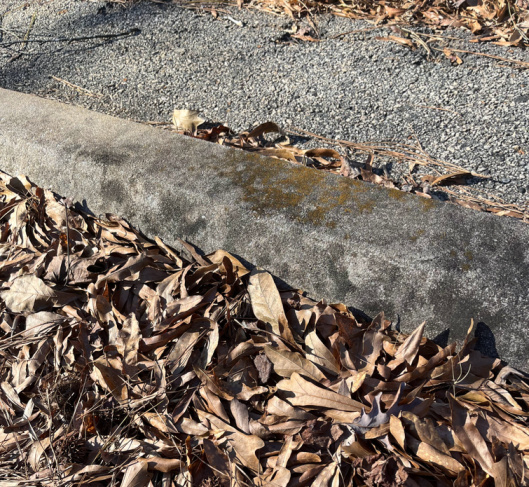Visual Contrast Sensitivity
Visual contrast sensitivity is often diminished for those with macular degeneration making it difficult to distinguish between dark blue and black or making out a gray car on a rainy day.
What is Visual Contrast Sensitivity?
One of the earlier symptoms of macular degeneration is a loss of contrast sensitivity. This means that even before an individual notices a significant change in their vision, they may begin to have difficulty perceiving subtle differences between colors and shades of gray.
Macular degeneration is a condition that affects the part of the eye known as the macula, which is responsible for producing fine, detailed vision and color vision. When the macula is damaged, it can lead to colors appearing more faded and a diminished ability to distinguish between similar colors.
Loss of contrast sensitivity can occur even in the early stages of macular degeneration. By detecting even subtle loss in contrast sensitivity, it helps identify the presence of eye diseases like macular degeneration and cataracts that might not be observable through more common tests that focus only on visual acuity. This can potentially lead to earlier detection and treatment, preventing vision loss further down the line.
Visual Contrast Sensitivity Test
Contrast sensitivity testing is a type of eye test that measures your ability to distinguish between incremental changes in shades of gray.
Unlike standard eye exams which measure visual acuity, your ability to see the details of a letter or number in high contrast black on white, contrast sensitivity testing assesses your ability to see the details of an object against its background.
The Pelli Robson contrast sensitivity chart is one of the most common tests for contrast sensitivity. It is a chart with large letters that gradually get fainter or reduce their contrast against the background.
As you can see from the picture, the contrast of the letters diminishes with each line.
This test is done before your pupils are dilated and while you are wearing your prescription glasses. Each eye is tested separately.
The patient starts with the topline and recites the letters from left to right, going down one line at a time. The test will tell your eye doctor what the lightest contrast is that you can see.

This test is especially important to help patients understand why they can't see well in situations where the contrast between an object and its background is not pronounced, such as during nighttime or in foggy conditions. If someone has poor contrast sensitivity, they may struggle to see objects in these situations, even if those objects are relatively large or detailed, making it dangerous to drive.
Surprisingly, contrast sensitivity testing is not usually included in a routine eye exam, but you can certainly ask your eye doctor to perform this simple test of visual function.
While standard eye tests measure one's visual acuity (clarity or sharpness of vision), contrast sensitivity testing measures the ability to discern the differences in brightness between objects and provides valuable data about eye health that's often overlooked in traditional eye tests. Both eye exams provide valuable information regarding one's overall visual function.
Contrast sensitivity testing can also provide insight into how one's macular degeneration is progressing over time or how well certain treatments are working, as improvements or decrease in contrast sensitivity can directly correlate to the condition's progression or treatment effectiveness.
Visual Contrast Sensitivity Loss
There are many implications to the loss of visual contrast sensitivity from difficulty reading, to increase risk of falls, to trouble driving safely.

1. Reading
Any print that doesn't use high contrast, like a newspaper, is more difficult to read.
2. Increase Risk of Falls
The inability to see slight dips in a sidewalk or an upcoming curb increases one's risk for falls.
3. Diminished Safety When Driving
Trouble seeing a grey car on a rainy day makes driving more dangerous.
4. More Spills in the Kitchen
Daily living activities can be affected, like the inability to see how much coffee can be poured into a dark coffee cup means more spills and mishaps.
Maximize Contrast to Maximize Your Usable Vision
If you've been assessed and diagnosed with low contrast sensitivity your eye doctor may suggest you add a yellow filter to your corrective lenses as they may help to increase contrast sensitivity.
Use contrast to maximize your usable vision. My father-in-law, who had wet macular degeneration often spilled his water glass or broke clear glasses simply because he could not see them. Replace your clear glasses with colored glasses or cups.

To prevent spills in the kitchen, use a white coffee mug for your morning coffee or a dark blue glass for drinking your cold milk.

Adjust your contrast setting on your computer or your e-book readers for easier reading.
Use dark blue towels in your white bathroom or white dinner plates on a dark countertop.
Improved Visual Contrast Sensitivity with Better Lighting
Have you noticed how your visual contrast sensitivity is diminished when it get's dark out or you are in a low light situation, like a restaurant?

You can enhance this visual function by using more and better lighting, whether it's using a penlight to read a menu or a desk lamp with an adjustable arm.
Increased lighting in the rooms of your house helps to eliminate dark corners and shadows for improved vision.
Improve your visual contrast sensitivity by using these strategies to maximize your useable vision.
Go from Visual Contrast Sensitivity to Macular Degeneration Symptoms
Return to WebRN Macular Degeneration Home
Your second block of text...
√ Prevention of Macular Degeneration?
√ Tips for Daily Living?
√ Food Suggestions for a Macular Degeneration Diet?
√ Ideas on Visual Aids to Maximize your Sight?
If you said "yes" to any of the above, sign up for the monthly Macular Degeneration News.




